The TS ECET Pharmacy Syllabus 2024 contains various topics under Pharmaceutical Chemistry, Pharmaceutics, Pharmacognosy, and Pharmacology. The PDF for the syllabus has been released on the official website of TS ECET.
Table of Contents
TS ECET Pharmacy Syllabus 2024 has been released by the conducting body of TS ECET, Osmania University. The syllabus is divided into four sections, each carrying 50 marks.
The syllabus of TS ECET is quite vast, and some of the topics covered in the syllabus are Pharmacopoeia, Topical preparations, Community Pharmacy Management, Anti-Hypertensive Agents, etc.
TS ECET Pharmacy Syllabus 2024 PDF
Candidates can find the direct link for TS ECET Pharmacy Syllabus 2024 PDF in the table below-
| Subject | Syllabus PDF |
| TS ECET Pharmacy Syllabus 2024 | Download PDF |
Also Check: TS ECET Exam Instructions 2024
TS ECET Pharmacy Syllabus 2024
Candidates preparing for TS ECET Pharmacy 2024 exam must go through the TS ECET Pharmacy Syllabus 2024. The syllabus has four sections: Pharmaceutical Chemistry, Pharmaceutics, Pharmacognosy, and Pharmacology.
Each section contains detailed topics, and candidates are required to go through the topics properly.
TS ECET Pharmacy Pharmaceutics Syllabus
TS ECET Pharmacy Pharmaceutics Syllabus comprises topics such as General Principles of Law, History, and Various Acts Related to Drugs and Pharmacy Profession, Legal requirements to set up a community pharmacy
Clinical Establishment Act and Rules, Stages of patient counselling - Introduction, counselling content, counselling process, and closing the counselling session etc. Candidates may refer to the complete list of the topics below.
Unit I
- History of the profession of Pharmacy in India in relation to Pharmacy education, industry, pharmacy practice, and various professional associations.
- Pharmacy as a career
- Pharmacopoeia: Introduction to IP, BP, USP, NF and Extra Pharmacopoeia. Salient features of Indian Pharmacopoeia
- Packaging materials: Types, selection criteria, advantages and disadvantages of glass, plastic, metal, rubber as packaging materials
- Pharmaceutical aids: Organoleptic (Colouring, flavouring, and sweetening) agents
- Preservatives: Definition, types with examples and uses.
Unit II: Unit operations: Definition, objectives/applications, principles, construction, and workings of:
- Size reduction: hammer mill and ball mill
- Size separation: Classification of powders according to IP, Cyclone separator, Sieves and standards of sieves
- Mixing: Double cone blender, Turbine mixer, Triple roller mill and Silverson mixer homogenizer
- Filtration: Theory of filtration, membrane filter and sintered glass filter
- Drying: working of fluidized bed dryer and process of freeze drying
- Extraction: Definition, Classification, method, and applications.
Unit III
- Tablets – coated and uncoated, various modified tablets (sustained release, extended-release, fast dissolving, multilayered, etc.)
- Capsules - hard and soft gelatine capsules
- Liquid oral preparations - solution, syrup, elixir, emulsion, suspension, dry powder for reconstitution
- Topical preparations - ointments, creams, pastes, gels, liniments and lotions, suppositories, and pessaries
- Nasal preparations, Ear preparations
- Powders and granules - Insufflations, dusting powders, effervescent powders, and effervescent granules
- Sterile formulations – Injectables, eye drops and eye ointments
- Immunological products: Sera, vaccines, toxoids, and their manufacturing methods.
Unit IV
- Basic structure, layout, sections, and activities of pharmaceutical manufacturing plants
- Quality control and quality assurance: Definition and concepts of quality control and quality assurance, current good manufacturing practice (cGMP), Introduction to the concept of calibration and validation
- Novel drug delivery systems: Introduction, Classification with examples, advantages, and challenges
Unit V
- Community Pharmacy Practice – Definition, history and development of commUnity pharmacy - International and Indian scenarios
- Professional responsibilities of commUnity pharmacists
- Introduction to the concept of Good Pharmacy Practice and SOPs.
- Prescription and prescription handling
- Definition, parts of prescriptions, legality of prescriptions, prescription handling, labelling of dispensed medications (Main label, ancillary label, pictograms), brief instructions on medication usage
- Dispensing process, Good Dispensing Practices, dispensing errors and strategies to minimize them
Unit VI
- Patient counselling
- Definition and benefits of patient counselling
- Stages of patient counselling - Introduction, counselling content, counselling process, and closing the counselling session
- Barriers to effective counselling - Types and strategies to overcome the barriers
- Patient counselling points for chronic diseases/disorders - Hypertension, Diabetes,
- Asthma, Tuberculosis, Chronic obstructive pulmonary disease, and AIDS
- Patient Package Inserts - Definition, importance and benefits, Scenarios of PPI use in India and other countries
- Patient Information leaflets - Definition and uses
Unit VII
- Medication Adherence
- Definition, factors influencing non- adherence, strategies to over come non-adherence.
- Health Screening Services in Community Pharmacy
- Introduction, scope, and importance of various health screening services - for routine monitoring of patients, early detection, and referral of undiagnosed cases
- Over The Counter (OTC) Medications
- Definition, need and role of Pharmacists in OTC medication dispensing
- OTC medications in India, counselling for OTC products
- Self-medication and role of pharmacists in promoting the safe practices during self- medication
- Responding to symptoms, minor ailments, and advice for self-care in conditions such as Pain management, Cough, Cold, Diarrhoea, Constipation, Vomiting, Fever, Sore throat, Skin disorders, Oral health (mouth ulcers, dental pain, gum swelling)
Unit VIII: Community Pharmacy Management
- Legal requirements to set up a community pharmacy
- Site selection requirements
- Pharmacy designs and interiors
- Vendor selection and ordering
- Procurement, inventory control methods, and inventory management
- Financial planning and management
- Accountancy in commUnity pharmacy – Day book, Cash book
- Introduction to pharmacy operation software – usefulness and availability
- Customer Relation Management (CRM)
- Audits in Pharmacies
- SOP of Pharmacy Management
- Introduction to Digital Health, Health and Online pharmacies
Unit IX: General Principles of Law, History, and Various Acts Related to Drugs and Pharmacy Profession
- Pharmacy Act-1948 and Rules
- Objectives, Definitions, Pharmacy Council of India; its constitution and functions, Education Regulations, State and Joint state pharmacy councils, Registration of Pharmacists, Offences and Penalties.
- Pharmacy Practice Regulations 2015.
- Drugs and Cosmetics Act 1940 and Rules 1945 and New Amendments
- Objectives, Definitions, Legal definitions of schedules to the Act and Rules Import of drugs – Classes of drugs and cosmetics prohibited from import, Import under license or permit.
- Manufacture of drugs
- Prohibition of manufacture and sale of certain drugs, Conditions for grant of license and conditions of license for manufacture of drugs, Manufacture of drugs for test, examination and analysis, manufacture of new drug, loan license and repacking license. Study of schedule C and C1, G, H, H1, K, P, M, N, and X.
- Sale of Drugs
- Wholesale, Retail sale and Restricted license, Records to be kept in a pharmacy Drugs Prohibited for manufacture and sale in India.
- Administration of the Act and Rules
- Drugs Technical Advisory Board, Central Drugs, Laboratory, Drugs Consultative Committee, Government analysts, licensing authorities, controlling authorities, Drug Inspectors.
Unit X
- Narcotic Drugs and Psychotropic Substances Act 1985 and Rules
- Objectives, Definitions, Authorities and Officers, Prohibition, Control and Regulation, Offences and Penalties.
- Drugs and Magic Remedies (Objectionable Advertisements) Act 1954 Objectives,
- Definitions, Prohibition of certain advertisements, Classes of Exempted advertisements, Offences and Penalties.
- Prevention of Cruelty to Animals Act-1960: Objectives, Definitions, CPCSEA - brief overview, Institutional Animal Ethics Committee, Breeding and Stocking of Animals,
- Performance of Experiments, Transfer and Acquisition of animals for experiment,
- Records, Power to suspend or revoke registration, Offences and Penalties.
Unit XI
- Poisons Act-1919: Introduction, objective, definition, possession, possession for sales and sale of any poison, import of poisons
- FSSAI (Food Safety and Standards Authority of India) Act and Rules: brief overview and aspects related to manufacture, storage, sale, and labelling of Food Supplements
- National Pharmaceutical Pricing Authority: Drugs Price Control Order (DPCO) - 2013.
Objectives, Definitions, Sale prices of bulk drugs, Retail price of formulations, Retail price and ceiling price of scheduled formulations, Pharmaceutical Policy 2002, National List of Essential Medicines (NLEM) - Code of Pharmaceutical Ethics: Definition, ethical principles, ethical problem solving, registration, code of ethics for Pharmacist in relation to his job, trade, medical profession and his profession, Pharmacist’s oath.
Unit XII
- Medical Termination of Pregnancy Act and Rules – basic understanding, salient features, and Amendments
- Role of all the government pharma regulator bodies – Central Drugs Standards
- Control Organization (CDSCO), Indian Pharmacopoeia Commission (IPC)
- Good Regulatory practices (documentation, licenses, renewals, e-governance) in
- CommUnity Pharmacy, Hospital pharmacy, Pharma Manufacturing, Wholesale business, inspections, import, export of drugs and medical devices
- Introduction to BCS system of classification, Basic concepts of Clinical Trials, ANDA, NDA, New Drug development, New Drugs and Clinical Trials Rules, 2019. Brand v/s Generic, Trade name concept, Introduction to Patent Law and Intellectual Property Rights, Emergency Use Authorization
- Blood bank – basic requirements and functions
- Clinical Establishment Act and Rules – Aspects related to Pharmacy
Unit -XIII
- Biomedical Waste Management Rules 2016 – Basic aspects, and aspects related to pharma manufacture to disposal of pharma / medical waste at homes, pharmacies, and hospitals
- Bioethics - Basic concepts, history and principles. Brief overview of ICMR’s National Ethical Guidelines for Biomedical and Health Research involving human participants
- Introduction to the Consumer Protection Act
- Introduction to the Disaster Management Act
- Medical Devices – Categorization, basic aspects related to manufacture and sale
TS ECET Pharmacy Pharmaceutical Chemistry Syllabus
Topics such as Introduction to Social Pharmacy, Endocrine System (Hormones and their functions), Scope of Anatomy and Physiology, Definition of various terminologies, Minerals: Types, Functions, Deficiency diseases, recommended dietary requirements, are discussed in the TS ECET Pharmacy Pharmaceutical Chemistry Syllabus.
Unit -I
- Introduction to Pharmaceutical chemistry: Scope and objectives Sources and types of errors: Accuracy, precision, significant figures Impurities in Pharmaceuticals: Source and effect of impurities in Pharmacopoeial substances, importance of limit test, Principle and procedures of Limit tests for chlorides, sulphates, iron, heavy metals and arsenic.
- Volumetric analysis: Fundamentals of volumetric analysis, Acid-base titration, non-aqueous titration, precipitation titration, complex metric titration, redox titration
- Gravimetric analysis: Principle and method.
Unit -II
- Inorganic Pharmaceuticals: Pharmaceutical formulations, market preparations, storage conditions.
- Haematinics: Ferrous sulphate, Ferrous fumarate, Ferric ammonium citrate, Ferrous ascorbate, Carbonyliron
- Gastro-intestinal Agents: Antacids :Aluminium hydroxide gel, Magnesium hydroxide,
- Magaldrate, Sodium bicarbonate, Calcium Carbonate, Acidifying agents, Adsorbents, Protectives, Cathartics
- Topical agents: Silver Nitrate, Ionic Silver, Chlorhexidine Gluconate, Hydrogen peroxide, Boric acid, Bleaching powder, Potassium permanganate
- Dental products: Calcium carbonate, Sodium fluoride, Denture cleaners, Denture adhesives, Mouthwashes
- Medicinal gases: Carbon dioxide, nitrous oxide, oxygen
- Introduction to the nomenclature of organic chemical systems with particular reference to heterocyclic compounds containing up to Three rings.
Unit -III
- Study of the following category of medicinal compounds with respect to classification, chemical name, chemical structure (compounds marked with*) uses, stability and storage conditions, different types of formulations, and their popular brand names
- Drugs Acting on Central Nervous System
- Anaesthetics: Thiopental Sodium*, Ketamine Hydrochloride*, Propofol
- Sedatives and Hypnotics: Diazepam*, Alprazolam*, Nitrazepam, Phenobarbital*
- Antipsychotics: Chlorpromazine Hydrochloride*, Haloperidol*, Risperidone*, Sulpiride*, Olanzapine, Quetiapine, Lurasidone
- Anticonvulsants: Phenytoin*, Carbamazepine*, Clonazepam, Valproic Acid*, Gabapentin*, Topiramate, Vigabatrin, Lamotrigine
- Anti-Depressants: Amitriptyline Hydrochloride*, Imipramine Hydrochloride*, Fluoxetine*, Venlafaxine, Duloxetine, Sertraline, Citalopram, Escitalopram, Fluvoxamine, Paroxetine
Unit -IV
Study of the following category of medicinal compounds with respect to classification, chemical name, chemical structure (compounds marked with*) uses, stability and storage conditions, different types of formulations, and their popular brand names
- Drugs Acting on Autonomic Nervous System
- Sympathomimetic Agents:
- Direct Acting: NorEpinephrine*, Epinephrine, Phenylephrine, Dopamine*, Terbutaline,
Salbutamol (Albuterol), Naphazoline*, Tetrahydrozoline.
- Indirect Acting agents: Hydroxy Amphetamine, Pseudoephedrine.
- Agents With Mixed Mechanism: Ephedrine, Metaraminol
Adrenergic Antagonists:
- Alpha Adrenergic Blockers: Tolazoline, Phentolamine , Phenoxybenzamine, Prazosin.
- Beta adrenergic blockers: Propranolol*, Atenolol*, Carvedilol Cholinergic Drugs and Related Agents:
- Direct Acting Agents: Acetylcholine*, Carbachol, AndPilocarpine. Cholinesterase Inhibitors: Neostigmine*, Edrophonium Chloride, Tacrine Hydrochloride, Pralidoxime, Chloride, Echothiopate Iodide
- Cholinergic Blocking Agents: Atropine Sulphate*, Ipratropium Bromide
- Synthetic Cholinergic Blocking Agents: Tropicamide, Cyclopentolate Hydrochloride, ClidiniumBromide, Dicyclomine Hydrochloride*
Unit -V
Study of the following category of medicinal compounds with respect to classification, chemical name, chemical structure (compounds marked with*), uses, stability and storage conditions, different types of formulations and their popular brand names Drugs Acting on Cardiovascular System
- Anti-Arrhythmic Drugs: Quinidine Sulphate, Procainamide Hydrochloride, Verapamil, Phenytoin, Sodium*, Lidocaine Hydrochloride, Lorcainide, Hydrochloride, Amiodarone and Sotalol
- Anti-Hypertensive Agents: Propranolol*, Captopril*, Ramipril, Methyldopate Hydrochloride, ClonidineHydrochloride, Hydralazine Hydrochloride, Nifedipine,
- Antianginal Agents: Isosorbide Dinitrate
- Diuretics: Acetazolamide, Frusemide*, Bumetanide, Chlorthalidone, Benzthiazide, Metolazone, Xipamide, Spironolactone
- Hypoglycemic Agents: Insulin and Its Preparations, Metformin*, Glibenclamide*, Glimepiride, Pioglitazone, Repaglinide, Gliflozins, Gliptins
- Analgesic And Anti-Inflammatory Agents: Morphine Analogues, Narcotic Antagonists;
- Nonsteroidal AntiInflammatory Agents (NSAIDs) - Aspirin*, Diclofenac, Ibuprofen*, Piroxicam, Celecoxib, Mefenamic Acid, Paracetamol*, Aceclofenac
Unit -VI
Study of the following category of medicinal compounds with respect to classification, chemical name, chemical structure (compounds marked with*) uses, stability and storage conditions, different types of formulations and their popular brand names Anti-Infective Agents
- Antifungal Agents: Amphotericin-B, Griseofulvin, Miconazole, Ketoconazole*, Itraconazole, Fluconazole*, Naftifine Hydrochloride
- Urinary Tract Anti-Infective Agents: Norfloxacin, Ciprofloxacin, Ofloxacin*, Moxifloxacin,
- Anti-Tubercular Agents: INH*, Ethambutol, ParaAmino Salicylic Acid, Pyrazinamide, Rifampicin, Bedaquiline, Delamanid, Pretomanid*
- Antiviral Agents: Amantadine Hydrochloride, Idoxuridine, Acyclovir*, Foscarnet, Zidovudine, Ribavirin, Remdesivir, Favipiravir
- Antimalarials: Quinine Sulphate, Chloroquine Phosphate*, Primaquine Phosphate, Mefloquine*, Cycloguanil, Pyrimethamine, Artemisinin
- Sulfonamides: Sulfanilamide, Sulfadiazine, Sulfamethoxazole, Sulfacetamide*, Mafenide Acetate, Cotrimoxazole, Dapsone*
Unit -VII
Study of the following category of medicinal compounds with respect to classification, chemical name, chemical structure (compounds marked with*) uses, stability and storage conditions, different types of formulations and their popular brand names
- Antibiotics: Penicillin G, Amoxicillin*, Cloxacillin, Streptomycin, Tetracyclines:
- Doxycycline, Minocycline, Macrolides: Erythromycin, Azithromycin,
- Miscellaneous: Chloramphenicol* Clindamycin
- Anti-Neoplastic Agents: Cyclophosphamide*, Busulfan, Mercaptopurine, Fluorouracil*, Methotrexate, Dactinomycin, Doxorubicin Hydrochloride, Vinblastine Sulphate, Cisplatin, Dromostanolone Propionate.
Unit -VIII
Introduction to biochemistry: Scope of biochemistry in pharmacy; Cell and its biochemical Organization.
Carbohydrates
- Definition, classification with examples, chemical properties
- Mono saccharides - Structure of glucose, fructose, and galactose
- Disaccharides - structure of maltose, lactose, and sucrose
- Polysaccharides - chemical nature of starch and glycogen
- Qualitative tests and biological role of carbohydrates
Proteins
- Definition, classification of proteins based on composition and solubility with examples
- Definition, classification of amino acids based on chemical nature and nutritional requirements with examples
- Structure of proteins (four levels of organization of protein structure)
- Qualitative tests and biological role of proteins and amino acids
- Diseases related to malnutrition of proteins.
Unit -IX
Lipids
- Definition, classification with examples
- Structure and properties of triglycerides (oils and fats)
- Fatty acid classification - Based on Chemical and nutritional requirements with examples
- Structure and functions of cholesterol in the body
- Lipoproteins - types, composition, and functions in the body
- Qualitative Tests and Functions of Lipids
Nucleic acids
- Definition, purine and pyrimidine bases
- Components of nucleosides and nucleotides with examples
- Structure of DNA (Watson and Crick model), RNA, and their functions
Unit -X
Enzymes
- Definition, properties, and IUB and MB classification
- Factors affecting enzyme activity
- Mechanism of action of enzymes, Enzyme inhibitors
- Therapeutic and pharmaceutical importance of enzymes
Vitamins
Definition and classification with examples
- Sources, chemical nature, functions, coenzyme form, recommended dietary requirements, deficiency diseases of fat-and water-soluble vitamins
Unit -XI: Metabolism (Study of cycle/pathways without chemical structures)
- Metabolism of Carbohydrates: Glycolysis, TCA cycle and glycogen metabolism, regulation of blood glucose level. Diseases related to abnormal metabolism of Carbohydrates
- Metabolism of lipids: Lipolysis, β-oxidation of Fatty acid (Palmitic acid) ketogenesis and ketolysis. Diseases related to abnormal metabolism of lipids such as Ketoacidosis, Fatty liver, Hypercholesterolemia
- Metabolism of Amino acids (Proteins): General reactions of amino acids and its significance–Transamination, deamination, Urea cycle and decarboxylation.
Diseases related to abnormal metabolism of amino acids, Disorders of ammonia metabolism, phenyl ketonuria, alkaptonuria and Jaundice. - Biological oxidation: Electron transport chain and Oxidative phosphorylation
Unit -XII: Minerals: Types, Functions, Deficiency diseases, recommended dietary requirements
Water and Electrolytes
- Distribution, functions of water in the body
- Water turnover and balance
- Electrolyte composition of the body fluids, Dietaryintake of electrolyte and Electrolyte balance
- Dehydration, causes of dehydration and oral rehydration therapy
Introduction to Biotechnology
Organ function tests
- Functions of kidneys and routinely performed tests to assess the functions of kidneys and their clinical significance
- Functions of the liver and routinely performed tests to assess the functions of the liver and their clinical significance
- Lipid profile tests and their clinical Significance
Introduction to Pathology of Blood and Urine
- Lymphocytes and Platelets, their role in health and disease
- Erythrocytes - Abnormal cells and their significance
- Normal and Abnormal constituents of Urine and their significance.
Unit -XIII
- Scope of Anatomy and Physiology , Definition of various terminologies
- Structure of Cell: Components and its functions 2
- Tissues of the human body: Epithelial, Connective, Muscular and Nervous tissues – their sub-types and characteristics.
- Osseous system: structure and functions of bones of axial and appendicular skeleton
Classification, types and movements of joints, disorders of joints
- Haemopoietic system
- Composition and functions of blood
- Process of Hemopoiesis
- Characteristics and functions of RBCs, WBCs, and platelets
- Mechanism of Blood Clotting
- Importance of Blood groups
Unit -XIV
- Lymphatic system
- Lymph and lymphatic system, composition, function and its formation.
- Structure and functions of spleen and lymph node.
- Cardiovascular system
- Anatomy and Physiology of heart
- Blood vessels and circulation (Pulmonary, coronary and systemic circulation)
- Cardiac cycle and Heart sounds, Basics of ECG
- Blood pressure and its regulation
- Respiratory system
- Anatomy of respiratory organs and their functions.
- Regulation, and Mechanism of respiration.
- Respiratory volumes and capacities – definitions
Unit -XV
- Digestive system
- Anatomy and Physiology of the GIT
- Anatomy and functions of accessory glands
- Physiology of digestion and absorption
- Skeletal muscles
- Histology
- Physiology of muscle contraction
- Disorder of skeletal muscles
- Nervous system
- Classification of nervous system
- Anatomy and physiology of cerebrum, cerebellum, midbrain
- Function of hypothalamus, medulla oblongata and basalganglia
- Spinal cord-structure and reflexes
- Names and functions of cranial nerves.
- Anatomy and physiology of sympathetic and parasympathetic nervous system (ANS)
Unit -XVI
Sense organs - Anatomy and physiology of:
- Eye
- Ear
- Skin
- Tongue
- Nose
Urinary system
- Anatomy and physiology of urinary system
- Physiology of urine formation
- Renin - angiotensin system
- Clearance tests and micturition
Endocrine system (Hormones and their functions)
- Pituitary gland
- Adrenal gland
- Thyroid and parathyroid gland
- Pancreas and gonads
Reproductive system
- Anatomy of male and female reproductive system
- Physiology of menstruation
- Spermatogenesis and Oogenesis
- Pregnancy and parturition
Also Read: TS ECET 2021 Question Paper
TS ECET Pharmacy Pharmacognosy Syllabus
TS ECET Pharmacy Pharmacognosy Syllabus focuses on topics such as Classification of drugs, Quality control of crude drugs, Method of preparation of Ayurvedic formulations like Arista, Asava, Gutika, Taila, Churna, Lehya, and Bhasma, and Introduction to Social Pharmacy.
Unit-I: Definition, History, Present Status and Scope of Pharmacognosy
Classification of drugs:
- Alphabetical
- Taxonomical
- Morphological
- Pharmacological
- Chemical
- Chemo-taxonomical
Quality control of crude drugs:
- Different methods of adulteration of crude drugs
- Evaluation of crude drugs
Brief outline of occurrence, distribution, isolation, identification tests, therapeutic activity and pharmaceutical applications of alkaloids, terpenoids, glycosides, volatile oils, tannins and resins.
Unit-II
- Biological source, chemical constituents and therapeutic efficacy of the following categories of crude drugs.
- Laxatives Aloe, Castor oil, Ispaghula, Senna
- Cardiotonic Digitalis, Arjuna
- Carminatives and G.I. regulators Coriander, Fennel, Cardamom, Ginger, Clove, Black Pepper, Asafoetida, Nutmeg, Cinnamon
- Astringents Myrobalan, Black Catechu, Pale Catechu
- Drugs acting onnervous system
- Hyoscyamus, Belladonna, Ephedra, Opium, Tea leaves, Coffee seeds, Coca
- Anti-hypertensive Rauwolfia
- Anti-tussive Vasaka, Tolu Balsam
- Anti-rheumatics Colchicum seed
- Anti-tumour Vinca, Podophyllum
- Antidiabetics Pterocarpus, Gymnema
- Diuretics Gokhru, Punarnava
- Anti-dysenteric Ipecacuanha
- Antiseptics and disinfectants : Benzoin, Myrrh, Neem, Turmeric
- Antimalarials Cinchona, Artemisia
- Oxytocic Ergot
- Vitamins Cod liver oil, Shark liver oil
- Enzymes Papaya, Diastase, Pancreatin,Yeast
- Pharmaceutical Aids Kaolin, Lanolin, Beeswax, Acacia, Tragacanth, Sodium alginate, Agar, Guar gum, Gelatine
- Miscellaneous Squill, Galls, Ashwagandha, Tulsi, Guggul
Unit-III
- Plant fibres used as surgical dressings: Cotton, silk, wool and regenerated fibres
- Sutures – Surgical Catgut and Ligatures
- Basic principles involved in the traditional systems of medicine like: Ayurveda, Siddha, Unani and Homeopathy
Method of preparation of Ayurvedic formulations like: Arista, Asava, Gutika, Taila, Churna, Lehya and Bhasma
- Role of medicinal and aromatic plants in national economy and their export potential
- Herbs as health food:
- Brief introduction and therapeutic applications of:
- Nutraceuticals, Antioxidants, Pro-biotics, Pre-biotics, Dietary fibres, Omega-3-fatty acids, Spirulina, Carotenoids, Soya and Garlic
Introduction to herbal formulations
- Herbal cosmetics: Sources, chemical constituents, commercial preparations, therapeutic and cosmetic uses of: Aloe vera gel, Almond oil, Lavender oil, Olive oil, Rosemary oil, Sandal Wood oil. Phyto chemical investigation of drugs.
Unit-IV: Introduction to Social Pharmacy
- Definition and Scope. Social Pharmacy as a discipline and its scope in improving the public health. Role of Pharmacists in Public Health.
- Concept of Health -WHO Definition, various dimensions, determinants, and health indicators.
- National Health Policy – Indian perspective
- Public and Private Health System in India, National Health Mission Introduction to
- Millennium Development Goals, Sustainable Development Goals, FIP Development Goals
- Preventive healthcare – Role of Pharmacists in the following
- Demography and Family Planning
- Mother and child health, importance of breastfeeding, ill effects of infant milk substitutes and bottle feeding
- Overview of Vaccines, types of immUnity and immunization
- Effect of Environment on Health – Water pollution, importance of safe drinking water, waterborne diseases, air pollution, noise pollution, sewage and solid waste disposal, occupational illnesses, Environmental pollution due to pharmaceuticals
- Psychosocial Pharmacy: Drugs of misuse and abuse – psychotropics, narcotics, alcohol, tobacco products. Social Impact of these habits on social health and productivity and suicidal behaviours.
Unit-V: Nutrition and Health
- Basics of nutrition – Macronutrients and Micronutrients
- Importance of water and fibres in diet (1)
- Balanced diet, Malnutrition, nutrition deficiency diseases, ill effects of junk foods, calorific and nutritive values of various foods, fortification of food (3)
- Introduction to food safety, adulteration of foods, effects of artificial ripening, use of pesticides, genetically modified foods
- Dietary supplements, nutraceuticals, food supplements– indications, benefits, Drug-Food Interactions
- Introduction to health systems and all ongoing National Health programs in India, their objectives, functioning, outcome, and the role of pharmacists.
- Pharmaco economics – Introduction, basic terminologies, the importance of pharmaco Economics
Unit-VI: Introduction to Microbiology and Common Microorganisms
- Epidemiology: Introduction to epidemiology, and its applications. Understanding of terms such as epidemic, pandemic, endemic, mode of transmission, outbreak, quarantine, isolation, incubation period, contact tracing, morbidity, mortality Causative agents, epidemiology and clinical presentations and Role of Pharmacists in educating the public inprevention of the following communicable diseases:
- Respiratory infections – chickenpox, measles, rubella, mumps, influenza (including Avian-Flu, H1N1, SARS, MERS, COVID-19), diphtheria, whooping cough, meningococcal meningitis, acute respiratory infections, tuberculosis, Ebola
- Intestinal infections – poliomyelitis, viral hepatitis, cholera, acute diarrheal diseases, typhoid, amebiasis, worm infestations, food poisoning
- Arthropod-borne infections - dengue, malaria, filariasis and, chikungunya
- Surface infections – trachoma, tetanus, leprosy, STDs, HIV/AIDS
Unit-VII
- Hospital Pharmacy
- Definition, scope, national and international scenario
- Organisational structure
- Professional responsibilities, Qualification and experience requirements, job specifications, work load requirements, and inter-professional relationships
- Good Pharmacy Practice (GPP) in hospital
- Hospital Pharmacy Standards (FIP Basel Statements, AHSP)
- Introduction to NAQS guidelines and NABH Accreditation and Role of Pharmacists
- Different Committees in the Hospital
- Pharmacy and Therapeutics Committee - Objectives, Composition, and functions
- Hospital Formulary - Definition, procedure for development and use of hospital formulary
- Infection Control Committee – Role of Pharmacist in preventing Antimicrobial Resistance
Unit-VIII
- Supply Chain and Inventory Control
- Preparation of Drug lists - High Risk drugs, Emergency drugs, Schedule H1 drugs,
- NDPS drugs, reserved antibiotics
- Procedures of Drug Purchases – Drug selection, short term, long term, and tender/e-tender process, quotations, etc.
- Inventory control techniques: Economic Order Quantity, Reorder Quantity Level,
- Inventory Turnover etc.
- Inventory Management of Central Drug Store – Storage conditions, Methods of storage,
- Distribution, Maintaining Cold Chain, Devices used for cold storage (Refrigerator, ILR, Walk-in-Cold rooms)
- FEFO, FIFO methods
- Expiry drug removal and handling, and disposal. Disposal of Narcotics, cytotoxic drugs
- Documentation - purchase and inventory
- Drug distribution
- Drug distribution (in- patients and out - patients) – Definition, advantages and disadvantages of individual prescription order method, Floor Stock Method, Unit Dose
- Drug Distribution Method, Drug Basket Method.
- Distribution of drugs to ICCU/ICU/NICU/Emergency wards.
- Automated drug dispensing systems and devices
- Distribution of Narcotic and Psychotropic substances and their storage
Unit-IX
- Compounding in Hospitals. Bulk compounding, IV admixture services and incompatibilities, Total parenteral nutrition
- Radio Pharmaceuticals - Storage, dispensing and disposal of radiopharmaceuticals
- Application of computers in Hospital Pharmacy Practice, Electronic health records,
- Softwares used in hospital pharmacy
- Pharmacovigilance
- Definition, aim and scope
- Overview of Pharmacovigilance
- Medication errors: Definition, types, consequences, and strategies to minimize
- medication errors, LASA drugs and Tallman lettering as per ISMP
- Drug Interactions: Definition, types, clinical significance of drug interactions
Unit-X
- Clinical Pharmacy:
- Definition, scope, and development – in India and other countries, Technical definitions, common terminologies used in clinical settings and their significance such as Paediatrics, Geriatric, Anti-natal Care, Post-natal Care, etc.
- Daily activities of clinical pharmacists: Definition, goal, and procedure of Ward round participation
- Treatment Chart Review
- Adverse drug reaction monitoring
- Drug information and poisons information Medication history
- Patient counseling
- Interprofessional collaboration
- Pharmaceutical care: Definition, classification of drug-related problems. Principles and procedures to provide pharmaceutical care. Medication Therapy Management, Home Medication Review.
Unit-XI
- Clinical laboratory tests used in the evaluation of disease states - significance and interpretation of test results
- Haematological, Liver function, Renal function, thyroid function tests
- Tests associated with cardiac disorders
- Fluid and electrolyte balance
- Pulmonary Function Tests
- Poisoning: Types of poisoning: Clinical manifestations and Antidotes Drugs and Poison
- Information Centre and their services –Definition, Requirements, Information resources with examples, and their advantages and disadvantages
Also Check: TS ECET Mining Engineering Syllabus 2024
TS ECET Pharmacy Pharmacology Syllabus
TS ECET Pharmacy Pharmacology Syllabus contains topics such as Drugs used in Glaucoma, Drugs Acting on the Kidney, neurohumoral transmission, Anti-adrenergic drugs, Neuromuscular blocking agents, Diuretics, Anti-Diuretics, Hormones and Hormone Antagonists, Drugs Acting on the Cardiovascular System etc.
Unit-I
- General Pharmacology
- Introduction and scope of Pharmacology, Various routes of drug administration - advantages and disadvantages, Drug absorption - definition, types, factors affecting drug absorption.
- Bioavailability and the factors affecting bioavailability, Drug distribution - definition, factors affecting drug distribution, Biotransformation of drugs - Definition, types of biotransformation reactions, factors influencing drug metabolisms.
- Excretion of drugs - Definition, routes of drug excretion, General mechanisms of drug action and factors modifying drug action
Unit-II
- Drugs Acting on the Peripheral Nervous System
- Steps involved in neurohumoral transmission,
- Definition, classification, pharmacological actions, dose, indications, and contraindications of:
- Cholinergic drugs
- Anti-Cholinergic drugs
- Adrenergic drugs
- Anti-adrenergic drugs
- Neuromuscular blocking agents
- Drugs used in Myasthenia gravis
- Local anaesthetic agents
- Non-Steroidal Anti-Inflammatory drugs (NSAIDs)
Unit-III
- Drugs Acting on the Eye
- Definition, classification, pharmacological actions, dose, indications and contraindications of
- Miotics
- Mydriatics
- Drugs used in Glaucoma
- Drugs Acting on the Kidney
- Definition, classification, pharmacological actions, dose, indications, and contraindications of
- Diuretics
- Anti-Diuretics
Unit-IV
- Drugs Acting on the Central Nervous System
- Definition, classification, pharmacological actions, dose, indications, and contraindications of:
- General anaesthetics
- Hypnotics and sedatives
- Anti-Convulsant drugs
- Anti-anxiety drugs
- Anti-depressant drugs
- Anti-psychotics
- Nootropic agents
- Centrally acting muscle relaxants
- Opioid analgesics
Unit-V
- Drugs Acting on the Cardiovascular System
- Definition, classification, pharmacological actions, dose, indications, and contraindications of:
- Anti-hypertensive drugs
- Anti-anginal drugs
- Anti-arrhythmic drugs
- Drugs used in atherosclerosis and
- Congestive heart failure
- Drug therapy for shock
- Drugs Acting on Blood and Blood Forming Organs
- Definition, classification, pharmacological actions, dose, indications, and contraindications of:
- Hematinic agents
- Anti-coagulants
- Anti-platelet agents
- Thrombolytic drugs
Unit-VI
- Title: Drugs Acting on the Respiratory System
- Definition, classification, pharmacological actions, dose, indications, and contraindications of:
- Bronchodilators
- Expectorants
- Anti-tussive agents
- Mucolytic agents
- Drugs Acting on the Gastro Intestinal Tract
- Definition, classification, pharmacological actions, dose, indications, and contraindications of:
- Anti-ulcer drugs
- Anti-emetics
- Laxatives and purgatives
- Anti-diarrheal drugs
Also Check: TS ECET Rank Wise Colleges List
Unit-VII: Hormones and Hormone Antagonists
- Physiological and pathological role and clinical uses of:
- Thyroid hormones
- Anti-thyroid drugs
- Parathormone
- Calcitonin
- Vitamin D
- Insulin
- Oral hypoglycemic agents
- Estrogen
- Progesterone
- Oxytocin
- Corticosteroids
- Autocoids
- Physiological role of Histamine, 5 HT and Prostaglandins
- Classification, clinical uses, and adverse effects of antihistamines and 5 HT antagonists
- Biologicals
Unit-VIII: Chemotherapeutic Agents
- Introduction, basic principlesof chemotherapy of infections, infestations and neoplastic diseases, Classification, dose, indication and contraindications of drugs belonging to the following classes:
- Penicillins
- Cephalosporins
- Aminoglycosides
- Fluoroquinolones
- Macrolides
- Tetracyclines
- Sulphonamides
- Anti-tubercular drugs
- Anti-fungal drugs
- Anti-viral drugs
- Anti-amoebic agents
- Anthelmintics
- Anti-malarial agents
- Anti-neoplastic agents
Unit-IX
- Pharmacotherapeutics – Introduction, scope, and objectives. Rational use of Medicines, Evidence Based Medicine, Essential Medicines List, Standard Treatment Guidelines (STGs)
Unit-X
Definition, etiopathogenesis, clinical manifestations, nonpharmacological and pharmacological management of the diseases associated with:
- Cardiovascular System
- Hypertension
- Angina and Myocardial infarction
- Hyperlipidaemia
- Congestive Heart Failure
- Respiratory System
- Asthma
- COPD
- Endocrine System
- Diabetes
- Thyroid disorders - Hypo and Hyperthyroidism
- Central Nervous System
- Epilepsy
- Parkinson’s disease
- Alzheimer’s disease
- Stroke
- Migraine
- Gastro Intestinal Disorders
- Gastro oesophageal reflux disease
- Peptic Ulcer Disease
- Alcoholic liver disease
- Inflammatory Bowel Diseases (Crohn’s Disease and Ulcerative Colitis)
- Haematological disorders
- Iron deficiency anaemia
- Megaloblastic anaemia
- Infectious diseases
- Tuberculosis
- Pneumonia
- Urinary tract infections
- Hepatitis
- Gonorrhoea and Syphilis
- Malaria
- HIV and Opportunistic infections
- Viral Infections (SARS, CoV2)
- Musculoskeletal disorders
- Rheumatoid arthritis
- Osteoarthritis
- Dermatology
- Psoriasis
- Scabies
- Eczema
- Psychiatric Disorders
- Depression
- Anxiety
- Psychosis
- Ophthalmology
- Conjunctivitis (bacterial and viral)
- Glaucoma
- Anti-microbial Resistance
- Women’s Health
- Polycystic Ovary Syndrome
- Dysmenorrhea
- Premenstrual Syndrome
-
Also Check: TS ECET Mechanical Engineering Syllabus 2024
TS ECET Pharmacy Syllabus 2024 Preparation Tips
As the TS ECET exam is close, and candidates must start preparing from the TS ECET Pharmacy Syllabus 2024, below are some preparation tips candidates can follow to improve their chances of performing well on the examination day.
- If the candidate can learn a new topic from the TS ECET Pharmacy Syllabus 2024, they must check if they can pick up the tough ones to cover first. This method will cause less stress and more productive learning.
- Candidates are advised to go through the complete TS ECET Pharmacy Syllabus 2024 and check out all the topics from each section.
- Every four sections carry 50 marks; hence, candidates must divide the preparation time equally for all the sections.
- Candidates must practice the previous year's TS ECET Pharmacy Question Papers to get the gist of the exam pattern and the type of questions asked.
Solving the previous year's question paper also helps the candidates enhance their ability to know what possible topics might be covered in the question paper.
Here is a quick download link to the previous year's TS ECET Pharmacy model question paper- Download Now.
Also Read: TS ECET 2022 Question Paper

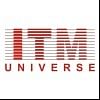

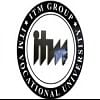

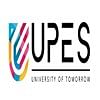

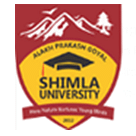


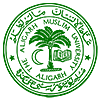
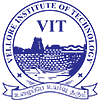

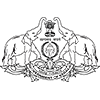


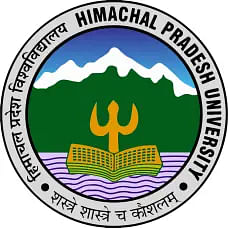















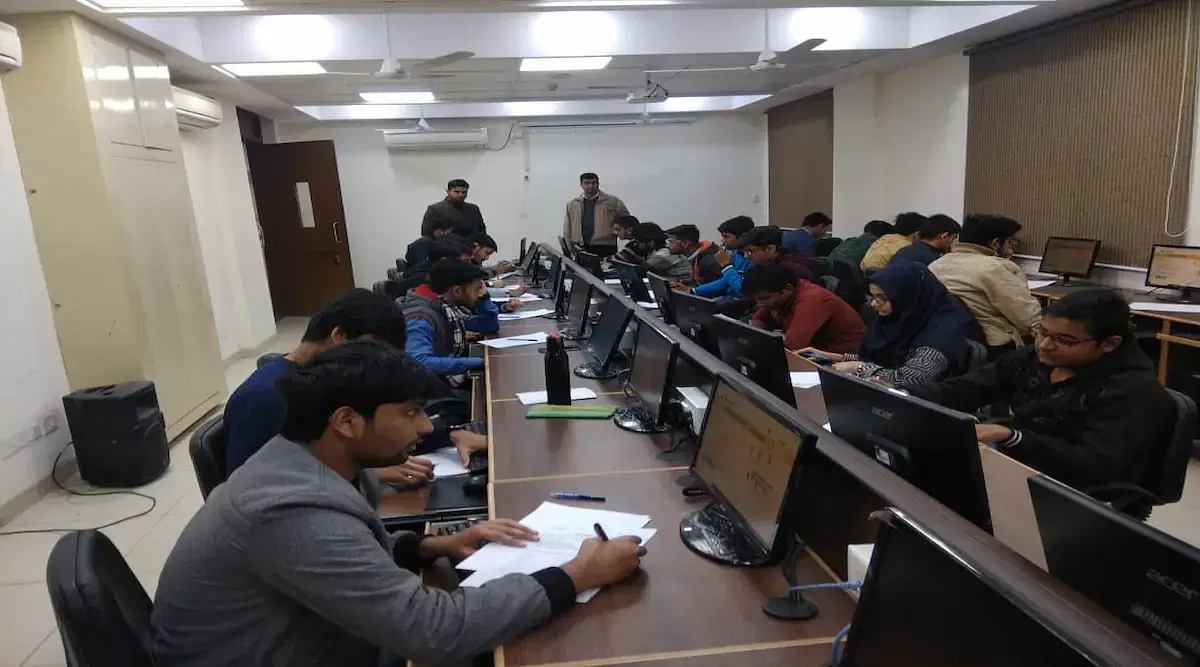









POST YOUR COMMENT